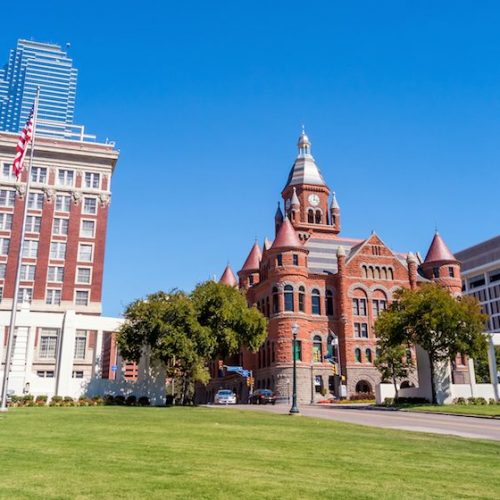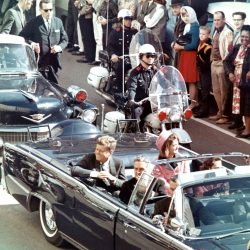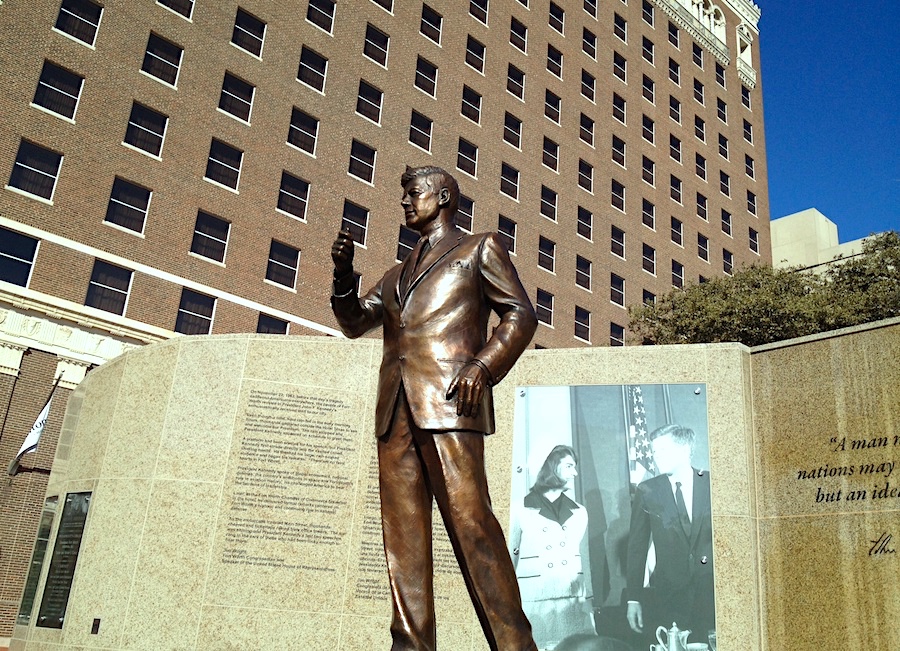
Dallas is known for a few things: cowboys, money, and the most recent presidential assassination in U.S. history.
That last one might be downer, but it’s also an important part of America’s past and fascinating trip back in time. Explore downtown Dallas, and you’ll see key spots tied to the dramatic events of November 1963 when President John F. Kennedy was fatally shot.
The Sixth Floor Museum is supposedly where Lee Harvey Oswald took aim with his rifle as Kennedy’s motorcade made its way down Elm Street, shooting three times at the president and his party.
But what if that’s not it?
Plenty are skeptical of the narrative that Lee Harvey Oswald was the lone shooter. In fact, a poll on the 20th anniversary of the event found that a whopping 74% of Americans believed another shooter was there in Dealey Plaza that day.
Did Lee Harvey Oswald act alone? If so, why did he do it? The Warren Commission, charged with investigating the case, painted Oswald as an attention-seeking, disaffected loner. But did his visit to the Cuban embassy in Mexico City just weeks before have anything to do with it?
In this article, I’ll dig into the past and share the top destinations in and around Dallas that connect directly to John F. Kennedy, his killer, and his killer’s killer. Despite the serious subject matter, it’s a perfect self-guided day tour for curious families, history buffs, or anyone who thinks that something might be up here. If you enjoyed this post, I highly recommend checking out our JFK assassination tour.
1. Dealey Plaza
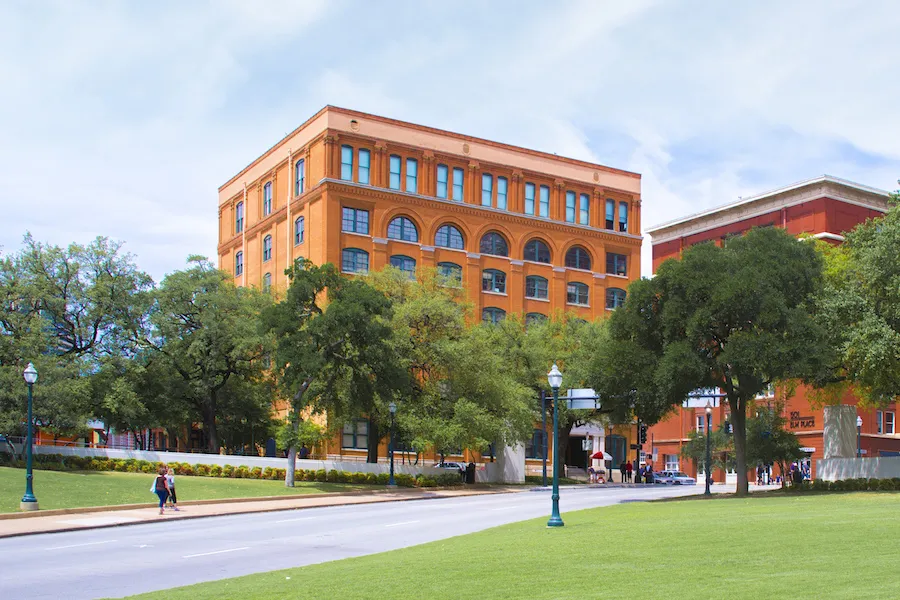
If we’re going to do our own spelunking, we have to start somewhere. So let’s see where it all happened. Dealey Plaza is where crowds gathered to watch Kennedy’s motorcade pass through on its way to the Trade Mart, now called the Dallas Market Center. That’s where the president was supposed to meet with local business leaders later that afternoon.
Take a look around the Grassy Knoll and the Bryan Pergola — where some say another shot rang out from — and keep an eye out for the white X-marks-the-spot in the road on Elm Street. This is still a busy road, so please watch out for traffic.
Beyond the Sixth Floor Museum, there are a few other spots of note around Dealey Plaza. While not impressive from the outside, a nearby railroad tower (known as the North Tower or Interlocking Tower 106) is where switching yard employee Lee Bowers was perched on Nov. 22, 1963. Bowers reported some strange happenings that day, including a “flash of light or smoke” from the picket fence by the Grassy Knoll around the time of the assassination.
Another point of interest just across the street from the Sixth Floor Museum is the Federal Building Annex, where Oswald rented a P.O. box weeks before the shooting under the name A.J. Hidell. Investigators believed he even had the murder weapon, bought through a mail order, shipped to the box. The building, still in use by the federal government, features two eight-foot murals depicting early Texas history commissioned through the New Deal Art Programs.
Insider tip: If you’d like to see the murals, ask the security guard out front for a quick look in the lobby, or settle for a peek through the windows.
2. Sixth Floor Museum
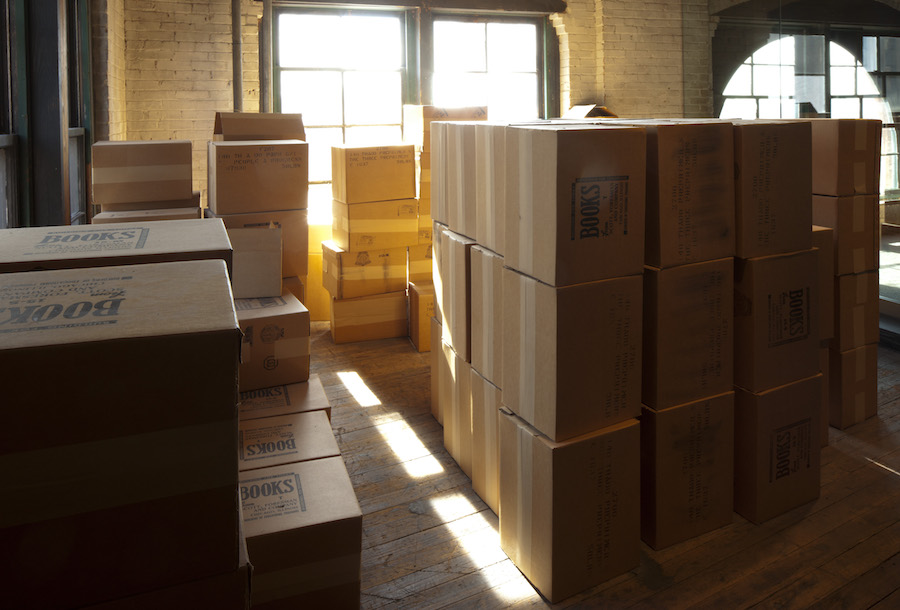
Regardless of the wide-ranging whodunnit theories, almost all of them will conclude that Oswald was indeed on the sixth floor of the Texas School Book Depository and that he did shoot at the president.
Oswald had gotten a job at the book depository, a clearinghouse for textbook publishers, several weeks before the murder and instantly became a prime suspect after missing the employee roll call. Converted into the Sixth Floor Museum in 1989, the building houses archival footage, photos, and documents from the Warren Commission’s investigation as well as a recreation of the “sniper’s perch” where Oswald set up his Italian surplus rifle on Nov. 22, 1963.
Want to see the view for yourself? The museum has set up a live-cam from the sixth floor, looking down on the path Kennedy’s motorcade took almost 60 years ago.
The Sixth Floor Museum is world’s the most comprehensive collection of artifacts related to the assassination, including the famous Zapruder film which caught the shooting on video.
3. John F. Kennedy Memorial
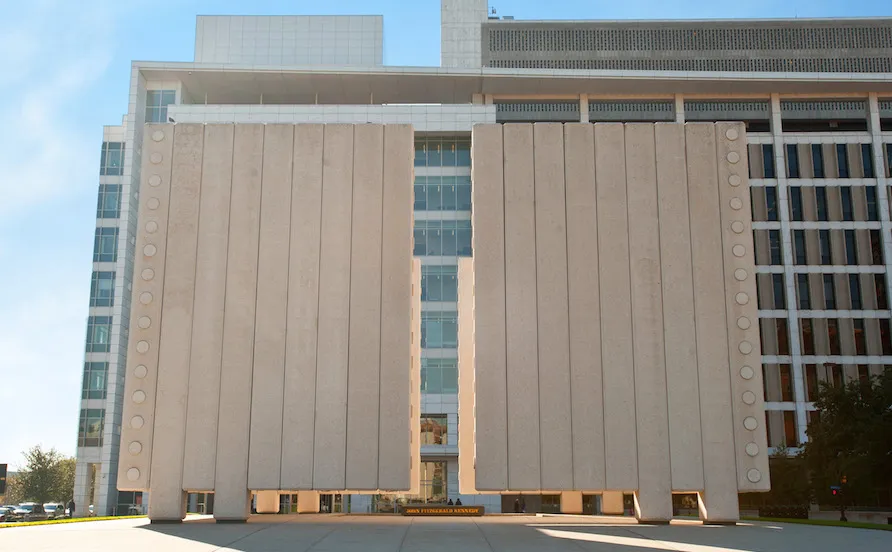
About a block east of Dealey Plaza, the John F. Kennedy Memorial is a concrete behemoth, a monument designed by architect and Kennedy family friend Philip Johnson. It’s a cenotaph, or an empty tomb, constructed to symbolize the freedom of Kennedy’s spirit.
If you’d like, take a moment here to rest and reflect. Johnson has said that the memorial should be a place of “quiet refuge” away from the hustle and bustle of downtown.
However, architecture critics have called the monument “a disappointing product of the city’s ambivalent response to the events of November 1963” and “an effort to tuck the history of that day away” due to its location hidden from Dealey Plaza. While cenotaphs are usually constructed out of marble, this one is made of (much less expensive) concrete. The city let the monument fall into disrepair in the ’90s before the Sixth Floor Museum took on its stewardship.
The inscription on the John F. Kennedy Memorial is particularly moving:
The joy and excitement of
John Fitzgerald Kennedy’s life belonged to all men.
So did the pain and sorrow of his death.
4. Dallas Municipal Building
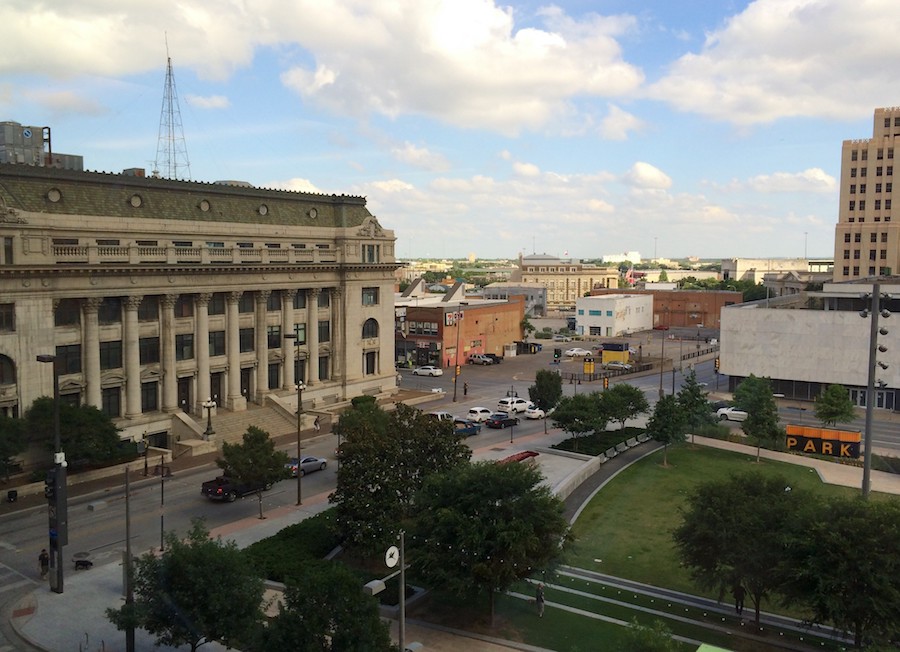
You may have already seen this building without knowing it.
The Dallas Municipal Building, formerly City Hall and home of the Dallas Police Department, is where Oswald was jailed and interrogated in the basement for two days. As police were leading him out through a garage, nightclub owner Jack Ruby rushed up and shot Oswald in the stomach, mortally wounding him. Dallas Times Herald photographer Robert H. Jackson snapped the incident and won a Pulitzer Prize for the iconic photo the next year.
Although access to the basement garage is off-limits to the public (as well as the fifth-floor jail cells where Oswald and later Ruby were confined), you can still see the ramp from the outside of the building and imagine what took place inside.
5. Oswald Rooming House
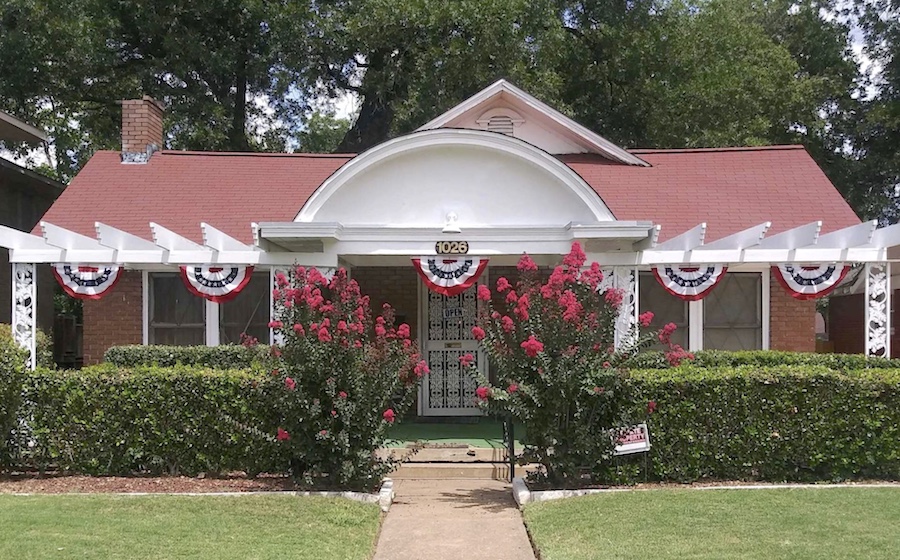
Although Oswald didn’t live here long, this is the boarding house where he was living when he killed President Kennedy. He rented a room for $8 a week for about two months under the name O.H. Lee from Mrs. Gladys Johnson, whose granddaughter, Patricia Hall, now runs tours of the Oak Cliff neighborhood home.
Just after the shooting, Oswald apparently ran into the home, grabbed a jacket and handgun and left again. When the housekeeper, Earlene Roberts, mentioned the assassination all over the news, Oswald didn’t answer her. Soon after leaving the home, Oswald encountered Dallas Police Officer J.D. Tippit on the corner of 10th and Patton, fatally shooting him after Tippit recognized Oswald as a suspect.
Even today, the house on 1026 N. Beckley looks exactly like it did in 1963. Step into Oswald’s room and see where he stashed the guns he would use to kill Kennedy and Tippit. Tours are available by appointment only, so call in advance before stopping by.
6. Neely Street Boarding House
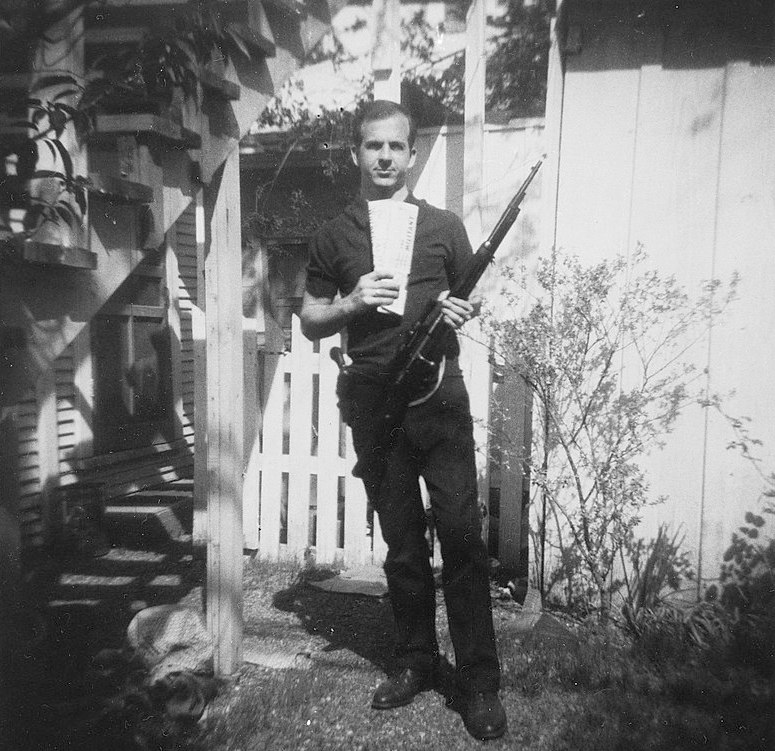
Just down the road, the duplex at 214 W. Neely St. is where Oswald was staying in March and April of 1963 with his wife, Marina, and their infant daughter, June. Here, in the backyard, Marina snapped three photos of her husband with communist articles in one hand and a rifle (which would later become the murder weapon) in the other, handgun holstered on his hip.
The photos would become contentious among conspiracy theorists, who’ve said that the pictures appear to be doctored. Marina, however, confirmed to investigators that she took the photos of her husband two weeks before he attempted to kill Maj. Gen. Edwin Walker, a segregationist and anti-Communist, at his home on Turtle Creek Boulevard.
Though the home is privately owned, a gap in the fence permits a peek into the backyard.
Insider tip: If you’re lucky, you might be allowed in to stand under the stairs where Oswald originally posed for the photo or you even permitted upstairs, but bring some spare change if this interests you.
7. Texas Theatre
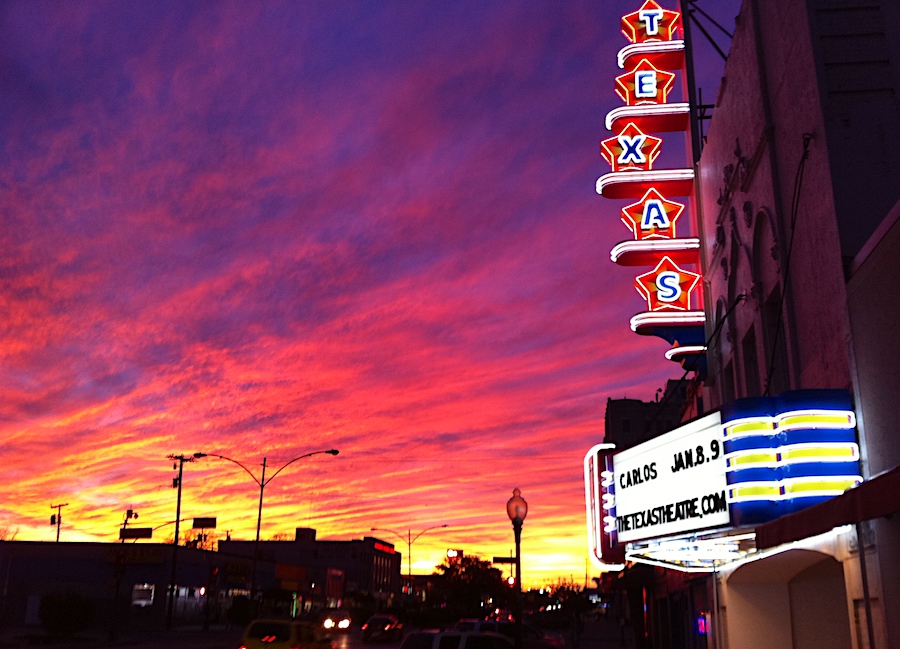
After running out of the boarding house and shooting Officer Tippit in front of at least a dozen other people, Oswald was officially on the lam. He ducked in and out of storefronts along Jefferson Boulevard before darting into the Texas Theatre without paying for a movie ticket.
Across the street, however, a shoe salesman had been watching the news coverage and noticed Oswald enter the theatre. Soon after, officers surrounded Oswald, and brought him into the station for the murder of Officer Tippit. It wasn’t until he was already being held in the downtown Dallas jail that officials connected the dots, charging him with the murder of President Kennedy.
The Texas Theatre is still open, showing a range of classic and current films. According to the theatre, you may still be able to sit in the very seats Oswald did (he moved seats as police were coming toward him). All the seats currently in the theatre date back to a 1953 renovation, so they would’ve been among those Oswald had to choose from at the time.
There are rumors, however, that the FBI — or a manager looking to capitalize on the opportunity — removed one or both of the seats, though the theatre says those rumors can’t be corroborated. If you’re looking for the full story, tours of the theatre can be booked via email.
8. Campisi’s Restaurant
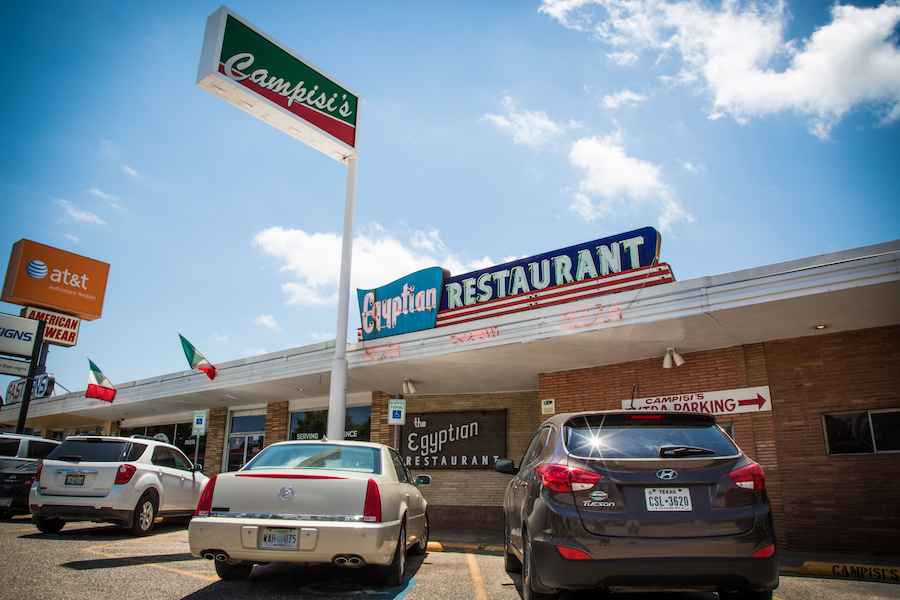
If you’re getting hungry by now, it might be time for a lunch break.
Up Highway 75 and just off Mockingbird Lane, Campisi’s has a reputation for its pizza and, historically, its mob ties. Originally named Campisi’s Egyptian Lounge, the restaurant dates back to 1946.
What does this have to do with Kennedy’s assassination? Jack Ruby (remember — he’s the guy who shot Oswald outside Dallas City Hall) frequented the restaurant in the ’60s. Ruby even ate here the night before the assassination. After Ruby’s arrest, owner Joe Campisi and his wife paid a visit to him in jail on Nov. 30, 1963.
Oddly enough, both Ruby and Oswald had ties to the Marcello crime family, whom Joe Campisi was involved with:
- Ruby was friends with Joseph Civello — Carlos Marcello’s top dog in Dallas — and had visited with Marcello’s associates in New Orleans.
- Oswald, on the other hand, knew the Marcellos through his family. His uncle worked for them as a bookie, and his mom had dated several of Marcello’s employees.
You can mull over all of this while you dine on longtime Campisi favorites like shrimp scampi, Italian-style crab claws, or house-made ravioli.
9. Ruth Paine House Museum
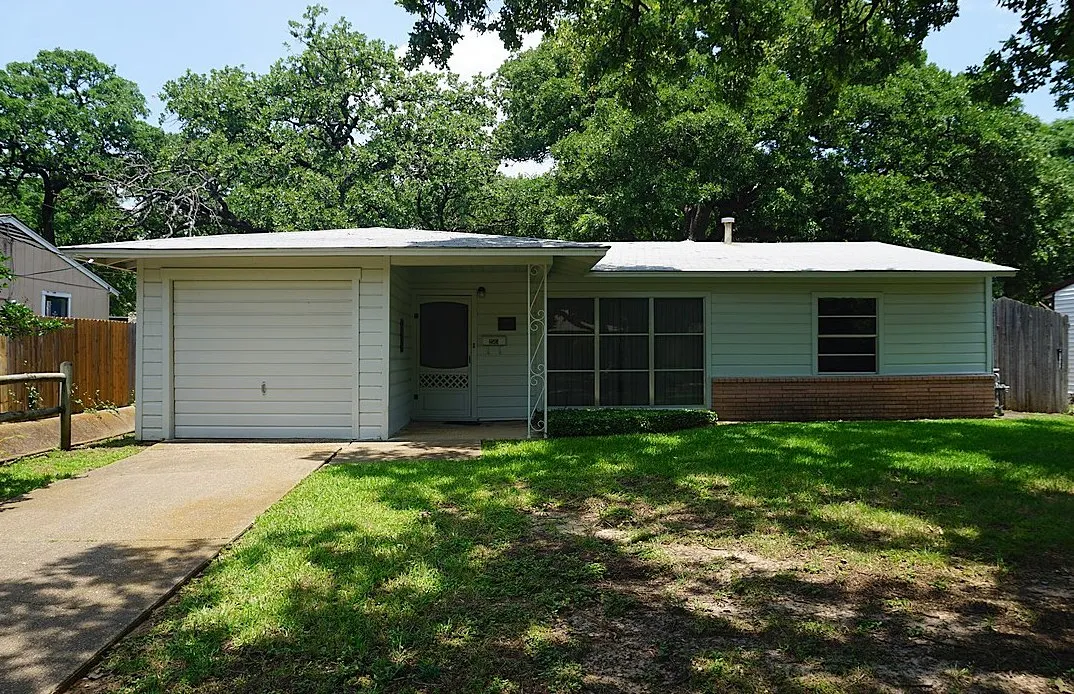
Head west now for another home tour, this time in Irving. The Ruth Paine House Museum is where a pregnant Marina Oswald was staying after separating from her husband. Lee Harvey would come up to visit on the weekends, however, and spent the night at the house on Nov. 21, 1963.
Apparently, it was a memorable night: Marina told investigators that he had pleaded with her to take him back — he’d even get her a new washing machine.
Marina rejected his advances, so he left early the next morning without his money (about $170) and his wedding ring. Before leaving, though, he grabbed a long, tube-shaped package out of the garage. When a coworker giving him a ride asked about it, he said they were curtain rods for his room on Beckley Avenue. Of course, it was the murder weapon, wrapped in a blanket.
Half a century later, the boarding house has been converted into the Ruth Paine House Museum, owned and operated by the City of Irving. The home has been meticulously restored to how it looked in 1963, with projected vignettes of actors impersonating key characters to offer a peek into history. Tour reservations can be made online.
10. Hotel Texas (Hilton Fort Worth)

One last stop out west: Fort Worth, AKA Cowtown. This stop takes us back in time to before the fateful event in Dallas.
The day before his assassination, Kennedy had spent the day in San Antonio and Houston, arriving at the historic Hotel Texas (now the Hilton Fort Worth) close to midnight. Before hopping over to Dallas the next morning, Kennedy spoke to Fort Worth Chamber of Commerce leaders at breakfast.
To honor Kennedy’s “last good memory,” the city installed the John F. Kennedy Tribute Memorial by the hotel, in General Worth Square. The memorial includes photos from the president’s visit and his famous quote: “There are no faint hearts in Fort Worth.”
Case Closed?
After trekking around the Metroplex, I hope you’ve come a little closer to deciding for yourself who really killed President Kennedy on Nov. 22, 1963. Was it Oswald? Did he act alone?
No matter what you think, we know the clues are out there. We may never know the full truth behind something that happened almost 60 years ago, but we can certainly do some sleuthing of our own. Besides, thousands of pages of classified documents may be released in coming years, meaning new revelations could be just around the corner.
While you can get much of the history here on our JFK assassination tour or our other tours of Dallas, I recommend stopping through Oak Cliff, Irving, and Fort Worth, too. Especially if you’re a die-hard JFK conspiracy theorist or history lover, these places help fill in the story from before and after the assassination.
Have you visited all 10 of these sites? Join the conversation on Facebook, and let us know what you think really happened in 1963 and how you enjoyed your tour of Dallas history.
